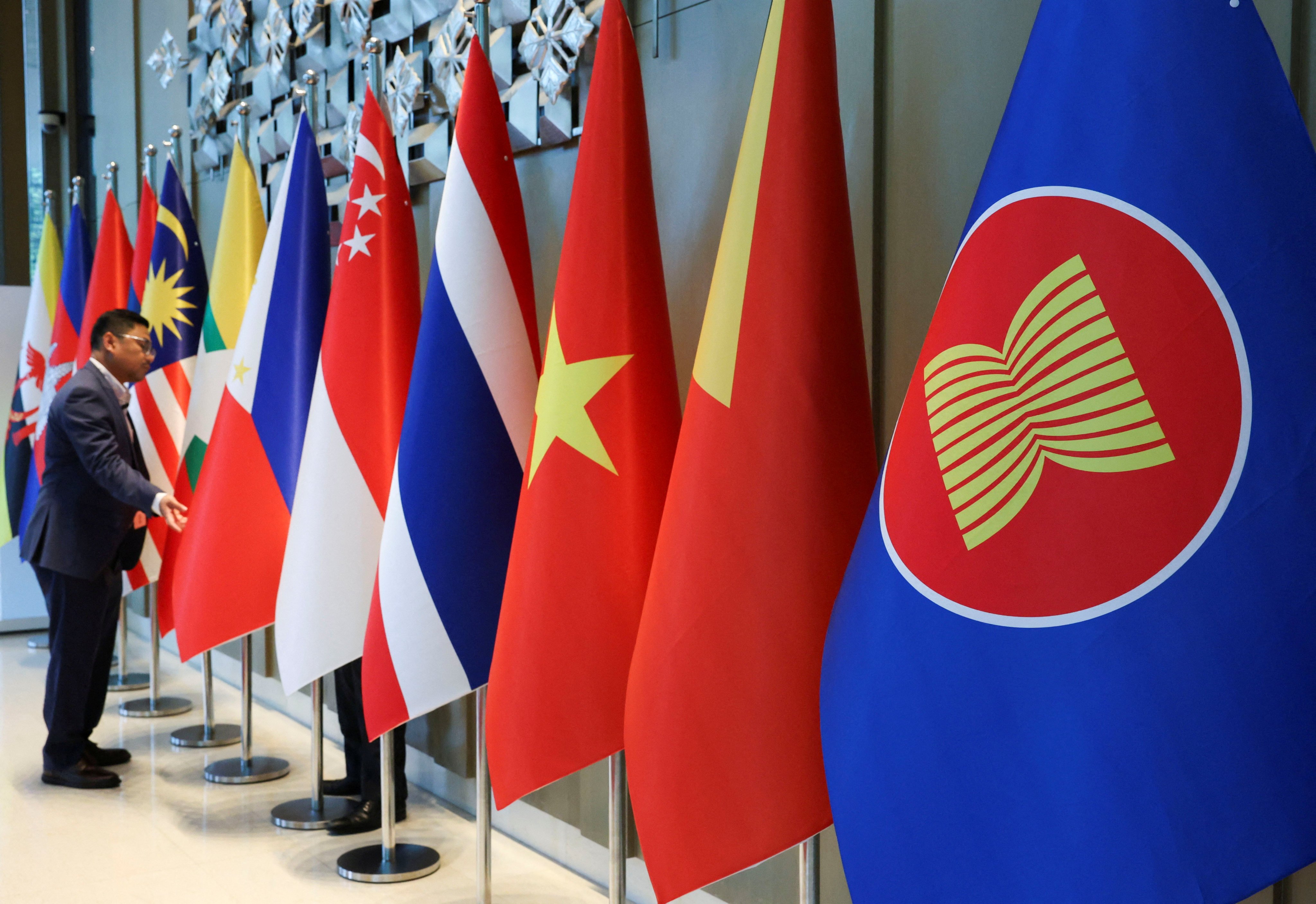China, Asean finish talks to forge stronger free trade deal amid US tariff war threat
In a dig at Washington, Beijing warns against tariffs as it wraps up talks with a region that could face some of the world’s steepest duties

China has negotiated an updated free-trade deal with the 10-nation Association of Southeast Asian Nations (Asean), strengthening Beijing’s role in the region amid ongoing trade tensions with the United States.
In a virtual meeting on Tuesday, Commerce Minister Wang Wentao and his Asean counterparts announced that they had completed talks to update the 15-year-old free trade deal. The 3.0 version of the agreement now awaits ratification from member countries and could be signed within the year.
“China stands ready to work with Asean to ensure the stability of global supply chains, advance shared development and safeguard international fairness and justice,” Wang said.
He warned against the misuse of tariffs and economic coercion, referring to Washington’s global tariff war that it launched in early April.
“It has seriously undermined the global trading system with so-called reciprocal tariffs, bringing huge uncertainties to the world economy,” Wang told his Asean counterparts.
“There are no winners in a tariff war or trade war.”
Despite the 90-day truce announced by Beijing and Washington on May 12, China has looked to strengthen economic ties with major trading partners, including Asean and the European Union.
The latest version of the China-Asean free trade agreement has undergone nine rounds of negotiations over the past two years and “will send a strong message in support of free trade and open cooperation”, China’s Ministry of Commerce said in an online statement.
The upgraded deal includes nine new chapters that cover areas such as the digital and green economies, supply chain integration and customs procedures, the statement said.
Both sides have agreed to strengthen cooperation in cybersecurity, electronic payment systems and infrastructure development to create a stable and efficient supply chain network, according to state broadcaster CCTV.
For the first time, the two sides have also committed to cooperating on the development of technical standards, starting with new energy vehicles and electronics.
Xu Ningning, chairman of the Regional Comprehensive Economic Partnership Industry Cooperation Committee, said the deal would create a larger and more integrated market. The agreement reflects the developmental needs of the 11 countries and was reached in light of US tariffs, he added.
“It not only helps us address the current trade tensions, but also provides a model for promoting global peace and cooperation.”
In 2024, China and Asean were each other’s top trading partners for the fifth consecutive year, with bilateral trade increasing by 7.8 per cent year on year, to US$982.3 billion.
Southeast Asian nations were among the hardest hit by Washington’s “reciprocal tariffs”, until the White House reversed course and paused the duties for 90 days. Cambodia, Laos and Vietnam face duties of 49 per cent, 48 per cent and 46 per cent respectively – unless they can negotiate a deal with the US, or the pause is extended.
Xin Qiang, a professor with Fudan University’s Institute of International Studies in Shanghai, said the upgraded free trade pact between China and Asean would serve as a powerful bargaining chip in either side’s negotiations with the United States.
“It is hoped that Donald Trump can realise what it means to his tariff wars and America’s international trade, when China and Asean work to beef up bilateral trade given their sheer sizes.”
The revamped trade deal with Beijing could also help to create a more “united” Asean in its talks with Washington, as the latter pressures the bloc to pick sides, he added.
“Asean must not fall into America’s divide-and-conquer trap. It has to deal with Washington collectively.”
The upgraded China-Asean trade deal would provide support to small and medium-sized enterprises, said Xu, calling it a crucial addition for the regional economy.
Since the China-US trade war began during US President Donald Trump’s first term, Asean has emerged as the top destination for Chinese foreign direct investment (FDI) in manufacturing in terms of the number of deals announced, according to a Rhodium Group report released in late April.
Over 86 per cent of the total investment value has gone to the automotive sector, information and communication technology, electronics, renewable energy equipment and consumer goods, the report’s authors said.
In April, President Xi Jinping visited Vietnam, Malaysia and Cambodia, where he called on Asian nations to unite against unilateralism and protectionism.